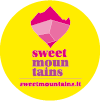
Origine degli ecomusei
Around the middle of the 1800 the importance of traditional architectures, local culture, typical clothing and food, vernaculars and languages, trades and life stories became part of our heritage that needs to be passed on.
This discovery led to a discussion around the concept of the traditional museum, intended as a display of works or a collection. It became clear that the storytelling of a place and of its local community asked for different ways of collection, cataloguing, distribution.
First examples of life scenes and rural trades reconstructions arose around 1890 in Scandinavia, using houses and other typical buildings dismounted and mounted as the original models (Skansen on the Stockholm hills, still existing today) and people reproducing traditional activities as in the past.
In 1962 the Malraux Act in France stated a new idea of culture based on the recognition that “any cultural heritage is surrounded by a portion of territory which is part of its value and its meaning” At the end of the 60’s another important interpretation stated that in culture what matters is not what is beautiful, unique or precious but what gives the chance to retrace and tell the story of the communities and therefore of the people that lived there and are stil living there nowadays.
First ecomuseums appeared officially at the end of the 70’s. The new museology intends the ecomuseum as the cultural sources of a territory, mills, furnaces, machineries, equipped itinearies. Nevertheless this would not be enough without the participation of the local communities to keep the heritage alive in order that the ecomuseum could grow up.
The Ecomuseums of Piedmont Region
In 1995 Piedmont was the first Region of Italy to issue an ecomuseum act, the L.R. 31/95 “Istituzione di Ecomusei del Piemonte”.
Through the ecomuseum act, the Regional Council institutes the ecomuseums following the evaluation of the projects made by the Scientific Commitee based on the Giunta Regionale (Regional Committee).
The Ecomuseums Laboratory, instituted by Piedmont Region, gives technical-scientific support to the regional policy on ecomuseums, providing consultation to the instituted ecomuseums
DEFINITIONS

What is an Ecomuseum?
Two different definitions to explain the concept of the Ecomuseo Regionale delle Miniere and Val Germanasca:
“The “Ecomuseo” is a contributed activity of promotion of the local community culture and heritage which developed and elaborated it together with institutional subjects in a sustainable development perspective”. Charter of Catania, 2007
“An ecomuseum aims to enhance the entirety of a culture and heritage related to a geographical territory, its identity and its community, based on local participation also involving an organization in order to promote the welfare and development of local communities”. E. Camanni
What does an ecomuseum do?
An ecomuseum does many things. It works on and for a territory. It works with and for its community. It proposes activities and initiatives, connecting different generations, traditions, cultures so that the role of ecomuseums is deeply appreciated by local communities and by a demanding and careful tourism devoted to the issues of sustainable development.



